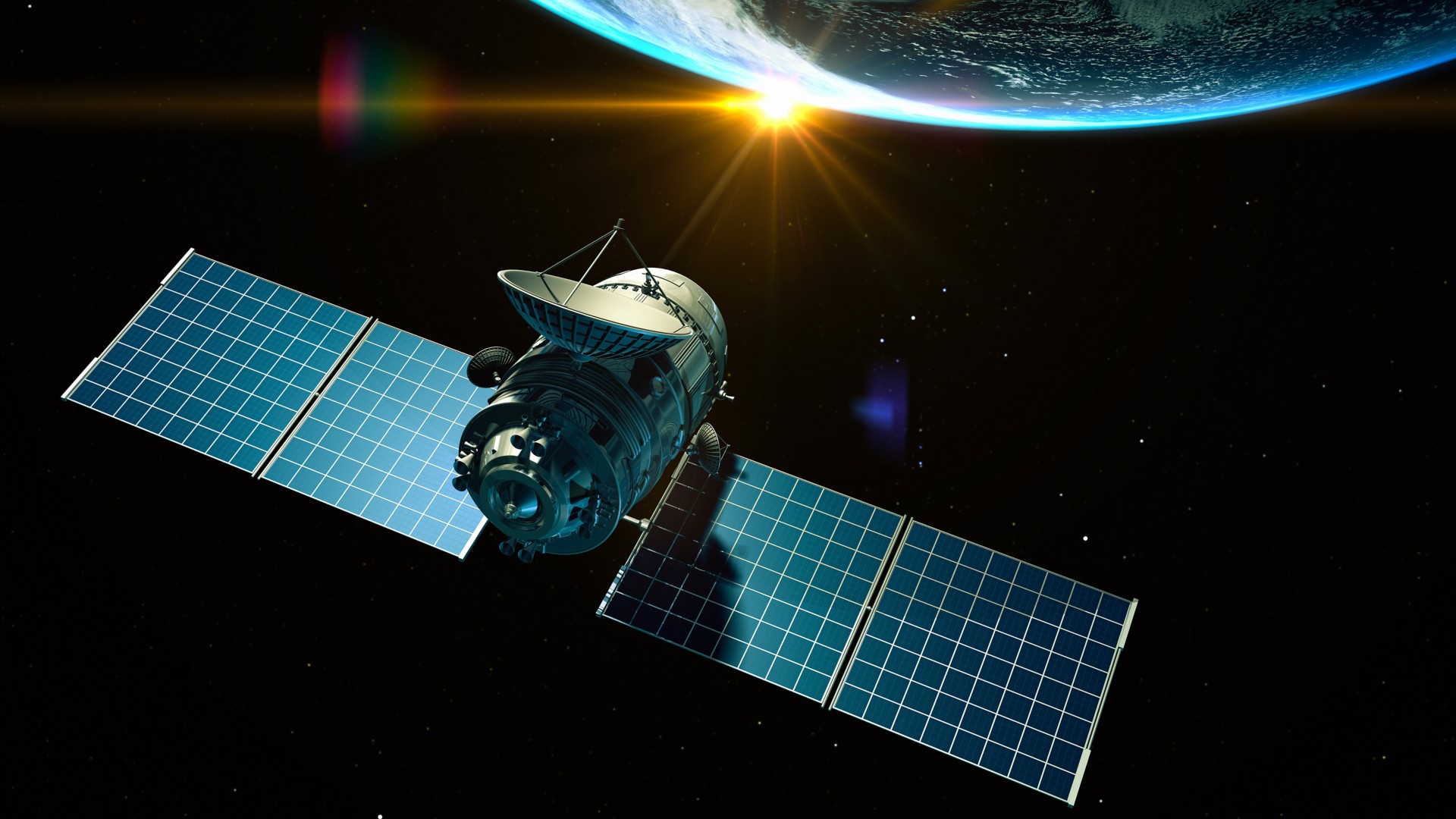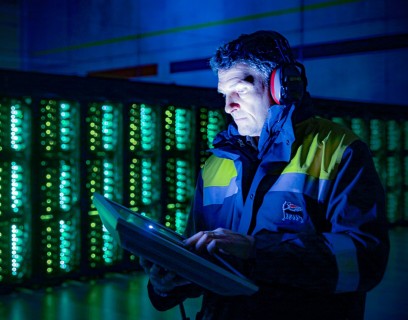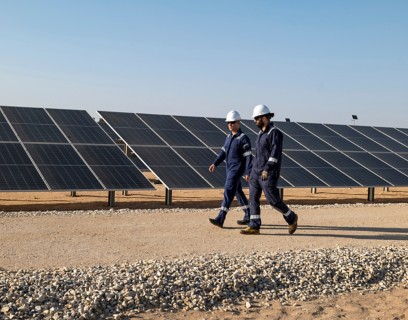- POWERED BY WIRED

There is plenty of room for renewable energy in space. From photovoltaic panels orbiting Earth to satellites that monitor energy supply, through the search for new high-tech solutions to improve the efficiency and reliability of terrestrial solar and wind systems, development opportunities are growing.
In recent years, both space agencies and government institutions have launched programs for exploration beyond the Earth's atmosphere, taking into account the direct and indirect impact that these actions can have on the energy transition and on the development of technologies capable of promoting the penetration of renewables. Placing solar panels in space, to give a simple but effective example, would reduce land consumption and guarantee the continuous production of clean energy without the consumption of land mass, consequently promoting social sustainability. And it is precisely from this perspective, which brings with it complex and not yet fully overcome technological challenges, that we start this journey.
Space photovoltaics, a solution to the discontinuity of renewables
At the beginning of 2023, the European Space Agency (ESA) announced the Solaris program to establish the economic and technological feasibility of producing solar energy directly in space. We are not talking about the traditional solar panels connected to spacecraft, satellites, or other orbiting objects, but about real solar farms which generate energy for the activities of those who live in Earth. According to initial estimates, we could generate up to 10% -15 % of the energy that all of Europe consumes today.
This is a possible answer to the problem of the discontinuity of renewables, as on the earth's surface sunlight hits the cells for a short part of the day and only when the sky is clear, while in space it is possible to exploit appropriate orbits to maximize the collection of energy, to the point of the potential for uninterrupted production.
The numbers of space photovoltaics
Covering both technical and theoretical data.
that could be produced through space photovoltaics, compared to European needs.
the distance between Earth and solar plants in space.
every day: the (theoretical) potential to collect energy from the sun without discontinuity.
that could be produced through space photovoltaics, compared to European needs.
the distance between Earth and solar plants in space.
every day: the (theoretical) potential to collect energy from the sun without discontinuity.
Space is not a walk in the park at all
Achieving a consistent result in terms of orbiting solar farms requires overcoming many existing challenges. The current frontier of research is to exploit space photovoltaics (which in itself has been a reality for powering satellites, spacecraft, and space stations for over half a century) taking it a step further and bringing energy to the Earth, even if only for purposes of demonstration: for example, in June 2023 the California Institute of Technology (Caltech) managed for the first time to transfer solar energy from space to Earth, powering some LEDs. To make this process more efficient, without a physical conductor linking orbiting panels to the Earth, this is what companies such as Space X and Blue Origin are researching – however – without a tangible outcome yet.
And the problem of the resistance of materials to cosmic rays also remains unsolved, to prevent the devices from being consumed within just a few months, as well as happened to the demonstration Tesla Roadster that Elon Musk launched with the Starman on board in February 2018. This is an additional technological challenge with no immediate solution.
The planning (by the European Space Agency) for space photovoltaics
This is how the European Space Agency (ESA) plans, today, the construction of solar plants outside the Earth's atmosphere.
2023
2025
2030
2035
2050
Start of Solaris Program
To examine the feasibility of producing solar energy in space.
End the first phase of the Solaris program
Defining the potential for solar energy in space, starting from the amount of energy that can be transferred to the ground.
Start of solar energy production in space
That is to say, transforming experiments and feasibility studies into concrete results.
Construction of a small space solar power plant
To develop a large-scale energy production and transfer system.
Production of solar energy in large quantities
To contribute, using space photovoltaics, to substantially eliminate net carbon dioxide emissions.
Materials for space, or for extreme conditions
Remaining in the photovoltaic sector, a crucial element has always been the semiconductor material required for cells. Silicon, thin film, and the all so-called third-generation technologies are already widely marketed and another effective and already tested solution involves the use of cadmium telluride (CdTe). In addition to being cheap, light, and efficient, this kind of cells can withstand the difficult environmental conditions in space. The invention, conceived in the laboratories of the United Kingdom, is a concrete example of the possible positive effects of research on renewable plants on Earth. Identifying materials capable of producing energy in extreme conditions, such as those found in space, is useful for building power plants in less-than-hospitable environments such as deserts, oceans, or mountains.
Impacts of space exploration on renewables on Earth
Even if it gets less media coverage than other fields, space activity also has a positive impact on renewable energy plants located on our planet, as orbiting satellites can act as watchkeepers for power plants. Already nowadays, and increasingly so in the coming years, thanks to these eyes from the sky it is possible to monitor climate changes and optimize energy production and supply processes of wind and photovoltaic systems.
The same satellite constellations could soon play a strategic role in energy storage, providing connections between storage systems located throughout the planet. For example, their usefulness has been demonstrated for quickly providing energy in the most remote areas and for efficiently managing blackouts. In short, space is also a resource for promoting the sustainable development of still low-tech countries and resolving ethical and social issues such as access "for all" to clean energy.
Off planet (geo)thermal energy: little more than science fiction
Today, geothermal energy represents less than 1% of global energy production. Although it is a reliable resource and capable of satisfying 50% of consumption, its development has always been limited, especially when compared with photovoltaic and wind power.
Could space exploration be the key to the rebirth of geothermal energy? Scientists have already studied the potential applications of the technologies currently available on the moon, as well as on other planets, without achieving positive results. For example, Mars, having significant volcanic activity, could theoretically be a geothermal reservoir of great importance. However, the use of these resources is at least very distant in time, because the technologies for both the extraction of energy and its transfer to Earth still need to be improved. All this without considering the aspects related to the transfer of materials to a planet millions of kilometers away and, at least so far, impossible to reach by a spacecraft hosting a crew on board. The situation for the Moon is not very different, where imagining the presence of (geo)thermal plants currently swings between science fiction and the uncertain prospect of a remote future.
In short, dreaming big doesn't hurt, especially in the vastness of space, but staying with your feet firmly planted on the ground is also a must. Just like for the previously mentioned space photovoltaics, which in the short-medium term remains little more than a utopia, also due to the difficulty of transferring significant power to the surface of our planet without using physical conductors.
Curiosities about lunar geothermal energy
A few numbers to describe a potential that remains remote today.
the first official NASA documents on lunar geothermal energy date back more than half a century.
the size of an extinct volcanic area identified on the Moon in 2023.
the internal temperature of the lunar core, sufficient for geothermal extraction.
the first official NASA documents on lunar geothermal energy date back more than half a century.
the size of an extinct volcanic area identified on the Moon in 2023.
the internal temperature of the lunar core, sufficient for geothermal extraction.

Wired Italy
Since 2009, Wired Italia has been reporting on the evolving world, technology and innovation, not only digital but also cultural and social. It is the most influential publication dedicated to digital technologies, an observatory for those who, rather than imagining it, want to build the future.
Keep up to date with our email services
Enter your email *(required field) to receive the newsletter and email alert with updates on the news you’re interested in.



















